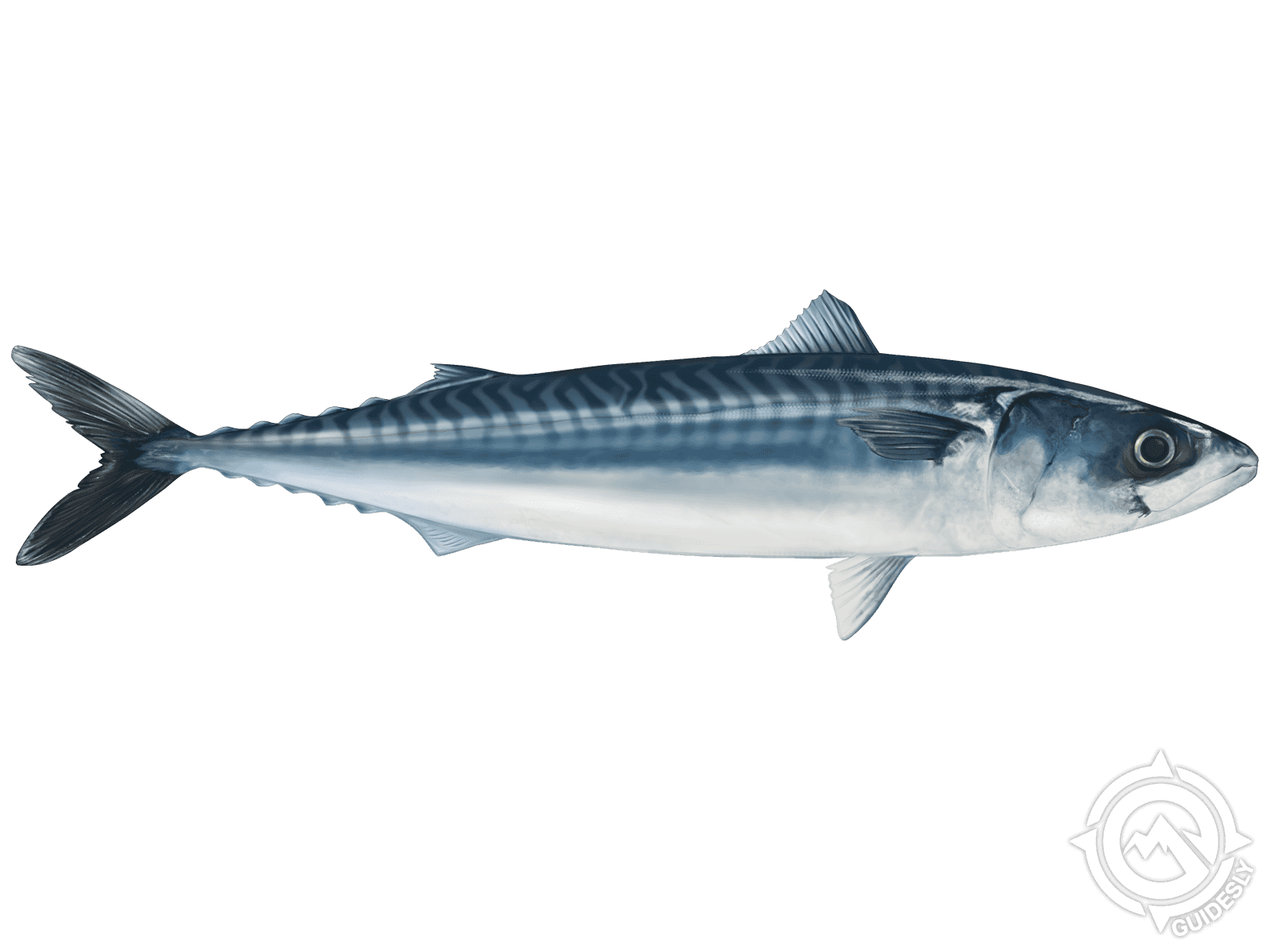Atlantic Mackerel

Species Details
Scomber Scombrus
Scombridae
Perciformes
Nearshore, Offshore
1 - 3 lbs.
14" - 24"
Atlantic Mackerel (Scomber scombrus) Fish Description
As the name implies, the Atlantic Mackerel (Scomber scombrus) is a common pelagic member of Scombridae family found in the temperate waters of the Atlantic Ocean. Although they are somewhat scattered far and wide across both sides of the ocean, they tend to stay fairly close along the northern coasts, especially during warmer seasons. When the climate becomes colder, however, they would head to deeper waters. They are often seen swimming in huge schools as protection from their numerous predators.
Atlantic Mackerel are easy enough to identify with their slender, streamlined body, which narrows as it reaches its forky tail. They have a distinct metallic-blue to green coloring on the top part of their body that gradually turns lighter to silver on the sides, until it reaches the white belly. Another distinguishing feature of this fish is the wavy vertical bars that run across the top part of its whole body. These distinctive color patterns, however, immediately fade when they die.
During spawning seasons, which usually occurs in the spring and summer months, the Atlantic Mackerel often stays near the coasts. A single female can produce as much as 450,000 eggs per season. When the eggs hatch, the larvae would be incapable of swimming and just get carried around in the open water near the surface by the current, feeding mainly on their yolk sac. They would reach their juvenile stage in about forty days, in which they would be able to swim on their own. They can grow quite fast, reaching their sexual maturity in just two years. As they reach their adulthood, they would feed mainly on copepods, krills, and shrimps; although they would also eat squids and other smaller fish, depending on the availability as well as opportunity.
Interesting Facts About Atlantic Mackerel
- The biggest Atlantic Mackerel caught measures two and a half feet long and weighed a little over three pounds.
- Like most mackerels, they have tiny scales that can only be seen upon closer examination.
- They are mostly active during the day.
- They swim in huge schools that can reach up to twenty miles long.
- The females release their eggs in batches between 5 and 7 times in a single spawning season.
- A single female can produce as much as 450,000 eggs per season
- They are known to be fast and agile swimmers.
- They have many predators, including sharks, whales, dolphins, tunas, sea turtles, pelicans, and humans.
- They are known for their tasty and healthy meat as it contains omega-3 fatty acids.
- Their population has declined over the past few decades due to overfishing.
- Annual fishing limit allocations were given between sports anglers and commercial fishers.
- Permits are required for commercial fishers.
- Available permits are limited every year.
Atlantic Mackerel Average Size and Swimming Speed
Although there have been records of a 2-foot catch, Atlantic Mackerels rarely hit the one and a half feet mark. Most of them can only reach about a foot, weighing on an average of four pounds. When it comes to swimming speeds, they are probably one of the quickest fish out there as can swim at the speed of five and a half meters per second.
Where to Find Them - Habitat and Distribution
Atlantic Mackerel are pretty abundant in most coastal waters of the Northern Atlantic. In North America, you can easily find them along or near the coasts of Labrador up north in Canada, down to the waters of North Carolina. They are, however, a pelagic schooling fish that often migrates. This means that they can be a bit hard to find as they don’t tend to stay for long specific areas. But once you do find them, you’re going to have your hands full as a school of Atlantic Mackerel has been known to be huge with numbers reaching in the hundreds or even thousands. Also, the best time to fish for this particular fish is during summer when the schools often get closer to the coasts.
Atlantic Mackerel Fishing Tips
Because they’re a pelagic schooling fish, the Atlantic Mackerel can easily be caught using different methods such as mid-water trawling, purse seine, weir, gillnet, as well as via hook and line. If you opt for the hook and line method, choose a light spinning rod paired with a small fixed spool reel equipped with a 15lb monofilament line or braid for you to be able to immediately feel the rather the tug when you hook one. You can also use artificial bait that resembles a shiny baitfish as this can effectively attract this rather aggressive eater. Lastly, if you’re going to be fishing on a small boat, watch out for other bigger predators such as sharks that might get aggressive towards you as a huge school of this tasty fish often attracts other predators as well.







